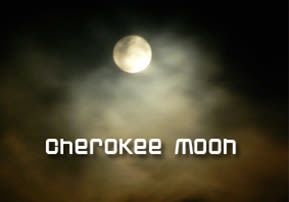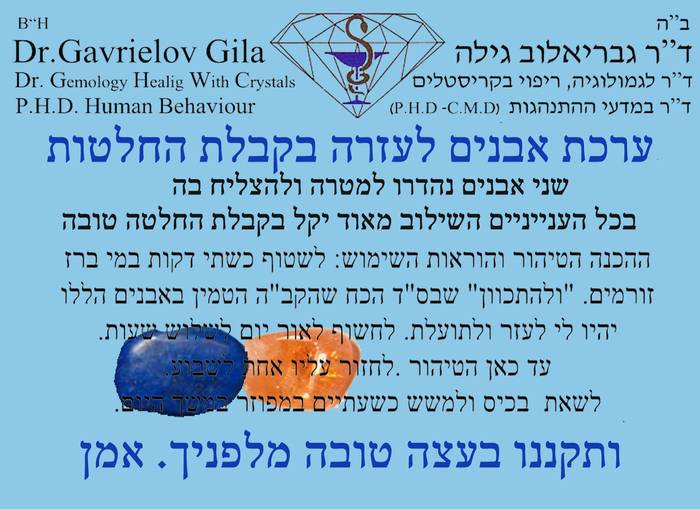
Cherokee Moon
The ‘Sliver Moon’ in the Cherokee Council House shows that the Cherokee nation keeps months in sacred manner of Hebrews, yet more evidence of their Israelite roots…

Command to Joseph in Egypt still observed
A carving of a “sliver moon” in a waxing stage attached to the back of the Great White Seat in our Council House has been a mystery. This is because Cherokee hold their feasts at the New Moons, especially quarterly new moons. But the “sliver moon,” points to the Sanctification of the Moon in the sacred manner of the Hebrews.
Sanctification of each “moon” has been commanded of all Israel since the charge was first given to Joseph in Egypt. So the command is older than the Torah given at Sinai.
“Sing aloud unto God our strength; make a joyful noise unto the God of Jacob. Take a psalm and bring hither the drum, the pleasant harp with the psaltery. Sound the shofar – (a horn from a ‘clean’ animal) – in the CHODESH (KHOE-DAYSH) (the month), at the time appointed, the day of our festival. For this is a statute for Israel and a law of the God of Jacob. This he ordained in Joseph for a testimony when he went out through the land of Egypt …” (Psalm 81:2-6)
Sanctification of Moon anciently occurred after seven days
The “time appointed” for the sanctification of the moon, according to oral traditions begins at 72 hours after the appearance of the “Molad” (MO-LOD’) when the moon appears as a dark circle, until mid-month or 15 days past the Molad. However, earlier oral traditions – some as old as Moses, who we call “Wasi” or reflecting the traditions of Solomon — state that the moon should not be sanctified until it is at least seven days old. This makes it a “sliver moon.”
The Hebrew ceremony outlined by oral traditions is usually performed by 10 men on any night other than a Sabbath or another Festival. However, it may be said by any group of four any time when the moon is seen in the night sky in a waxing stage, or in other words, the “sliver moon” during the first half of the month. The “festival” alludes to the day the month begins at the “new moon.” And the Cherokee are just as meticulous about determining the beginning of the month from which to begin counting 72 hours – or seven nights—as was the Jerusalem Sanhedrin in ancient times.
Covenant between David and Jonathan
The monthly sanctification also commemorates an ancient covenant established between King David before he became king and Prince Jonathan, then heir-apparent to the throne of Israel. David and Jonathan, at their final meeting before Jonathan’s tragic death, agreed that Jonathan would relinquish his throne to David but David would remember Jonathan’s people – the House of Joseph — when he became king.
David was faithful to his charge. During his reign, with the cooperation of the rival monarchy of Joseph, he was able to rule over and unite the whole of Israel. This cooperation continued until his son, Solomon, abused the privilege by unfairly taxing the House of Joseph. David’s united kingdom consequently split into the kingdoms of the House of Judah and the House of Israel. Despite a monthly reminder, to this day these two houses have not been reconciled. They were exiled to Assyria and Babylon 136 years apart during the First Temple Period. The Jewish people (the House of Judah) have largely returned. The House of Joseph, “children of Rachel,” who was represented by the moon in prophetic imagery, remain in exile.
The ‘flaw’ of the Moon
The “sliver moon” was chosen for this covenant so that all of Israel and Judah would be mindful of the “flaw” in the moon — and we would add the “flaw” in this covenant, until the House of Joseph also is returned to reconcile with the House of Judah. Since the moon alludes to Rachel, the “flaw” has specific reference to the House of Joseph in exile. Just as the moon is reborn after a period of decline and total disappearance, so too, the House of Israel led by the House of Joseph.
The prayers by the Jewish people in commemorating the Sanctification of the Moon read in part:
May it be your will, Almighty, my God and the God of my forefathers, to fill the flaw of the moon that there be no dimunition in it. May the light of the moon (mby: House of Joseph), be like the light of the sun (mby: Jacob in prophetic imagery), and like the light of the seven days of Creation as it was before it was diminished. As it is said, ”The two great luminaries (mby: Judah and Joseph).” And may there be fulfilled upon us the verse that is written: They shall seek the Almighty their God and David their king.
Shofar, drum, flute, and dance
The Hebrew ceremony also includes the recitation of Psalm 148, which commands the moon to praise the Almighty and Psalm 150, which calls to mind the command to joyfully sound the shofar, beat the drum and play other instruments including the flute. The people also are commanded to dance. In modern times, Jewish women have taken the lead in observing the sanctification and the dance.
This is a special dance done on the tiptoes while reaching up toward the visible moon, which is one reason each Hebrew has about two weeks to find a suitable night to fulfill the command, when the moon is not obscured by clouds or the weather inclement.
Similarly, among the Cherokee. Our women use the occasion of sanctifying especially the first spring moon for a “friendship dance.” Just as the Hebrews determine the first spring moon after a stage when the barley is “in the ear,” the time of the “green corn” or the earliest time that young corn is fit to eat, signals a special celebration for the Cherokee.
Grandfather is Molder, Maker, and Owner
If the moon is temporarily obscured by cloud cover, the priest of the Cherokee directs the people to turn their backs toward it until the cloud cover passes. He then directs the tribe to hold up their right hands toward the moon with the palm and fingers facing up.
The Hebrew celebration includes the following phrase, which is repeated three times: “Blessed is your Molder, blessed is your Maker, blessed is your Owner, blessed is your Creator.” As the largest object in the night sky, this acknowledgement that the moon was also “created,” serves to nullify the “worship” of anything in the night sky. This is because Israelites are forbidden to worship anything in Grandfather’s Creation. We may worship only Grandfather.
An untouchable dance
The Hebrew celebration’s dance commences with this statement also repeated three times on tiptoes:
“Just as I dance toward you but cannot touch you, so may none of my enemies be able to touch me for evil.”
A remembrance of King David follows the dance. It is desired that at least four persons sanctify the moon as a group because after David is recognized, a covenant greeting is extended to three persons.
Covenant of Friendship and Peace
Each person sanctifying the sliver moon then declares to three others in Hebrew, “Shalom Aleichem” (SHAH-LOM AL-LAY-KHEM), which means “Peace upon you.” The three in-turn respond: “Aleichem Shalom” or “Upon you, peace.” In Eastern cultures and in ancient as well as modern times, this exchange has the force of a “covenant of friendship,” just as David and Jonathan entered into such a covenant.
The petition for “a good sign and a good MAZEL (MAH’-ZEL)” follows. Mazel is usually translated simply “fortune,” but the Mazel is connected with one’s higher spiritual being.

Sabbath reminder
The command to sanctify the “sliver moon” each month is so important that a reminder of the date of the “new moon” is announced in the synagogues the Sabbath before it occurs.
Other similarities pertaining to the moon include the mutual Hebrew-Cherokee belief that the Autumn moon commemorating the creation of Adam at the time of “ripe fruits,” begins the civil calendar and that the new moon of Spring begins the priestly calendar.












Tell us what you think!
Thank you for your comment!
It will be published after approval by the Editor.